Glass Reinforced Plastic Provides Unbeatable Protection and Durability
 In many industrial and commercial industries, such as the gas and electricity sector, where sensitive and valuable equipment is outside or needs protection, there needs to be a durable and safe solution for protecting this equipment. Glass Reinforced Plastic or GRP is a recognised, tried and tested material used by a variety of utility companies for housing gas, water, electricity and telecoms equipment.
In many industrial and commercial industries, such as the gas and electricity sector, where sensitive and valuable equipment is outside or needs protection, there needs to be a durable and safe solution for protecting this equipment. Glass Reinforced Plastic or GRP is a recognised, tried and tested material used by a variety of utility companies for housing gas, water, electricity and telecoms equipment.
GRP is a fibre reinforced polymer. It is made up of plastic reinforced by fine fibres of glass. It is therefore also commonly referred to as fibreglass. It is a particularly strong material that can withstand tension and compression, yet it is surprisingly lightweight. It is also weather resistant so is ideal for outdoor usage. This adaptable polymer can be made into a variety of structures including buildings, kiosks, cabinets, enclosures, and covers. Specific applications include gas meter boxes, odour control covers and septic tanks for the sewerage industry.
As well as being used widely in the utility industries to house all types of equipment, there are many other examples of uses for the material. For instance glass reinforced plastic structures have been used in recent times to protect and conceal important equipment such as electrical transformers, sub-stations, switchgear and motor control centres for major wind turbine projects. It is also often used by the construction industry, railway industry and by petro-chemical companies.
GRP is very adaptable and can be easily moulded to particular design specifications and finishes. For instance it can be produced in a variety of colours and finished with different textures. A heavy-duty ‘textured’ finished is particularly good for outdoor buildings and housings as it won’t scratch, fade or be affected by UV light. The durability of this material also makes it good for long-term industrial usage, with many buildings expected to last for 30 years or more.
It can also be made to blend in to the environment. Natural colours such as greens and browns can be used and the adaptable material can even be moulded to simulate tile or slate roofs, brick and stone. This helps to list of factory machines achieve the look of a real building in an environmentally sensitive area. So as well as blending in seamlessly with the natural environment, it is the ideal material to complement existing structures and brickwork.
Glass-reinforced plastic can also be manufactured to offer premium levels of safety and protection. For instance it can be textured and moulded to prevent vandalism. For certain installations, products made from this material must have undergone fire and explosion tests. This ensures that specialist fire rated kiosks and explosion relief kiosks are provided when needed.
Being so adaptable, it is not just used for housing valuable equipment and products. The material is also used to make fences and flooring, among other things. It is particularly welding supply edmond ok good for anti-slip flooring as it is hard-wearing and provides a good grip. As a fencing material it is corrosion resistant and lightweight, yet extremely tough.
In today’s …

 Producing food products is a demanding science. All of the industrial supplies and equipment that are used to manufacture foodstuff has to meet stringent requirements of quality and sanitation. When it comes to industrial bearings, the food industry has to look at unique options. For instance, would you want lubricating oil to contaminate food on the production line? Or what if bacteria were to grow in a machine’s housing? Consumers would be put off to say the least.
Producing food products is a demanding science. All of the industrial supplies and equipment that are used to manufacture foodstuff has to meet stringent requirements of quality and sanitation. When it comes to industrial bearings, the food industry has to look at unique options. For instance, would you want lubricating oil to contaminate food on the production line? Or what if bacteria were to grow in a machine’s housing? Consumers would be put off to say the least. Compared to a bladed power tools like circular saws, powered belt sanders are far less intimidating to use and are much safer. Despite this users should be aware that a belt sander is still a very heavy piece of equipment that has a lot of power. It can be very dangerous if general and specific instructions are not followed carefully. Here are 10 safety rules to keep in mind when operating a belt sander or any power tools.
Compared to a bladed power tools like circular saws, powered belt sanders are far less intimidating to use and are much safer. Despite this users should be aware that a belt sander is still a very heavy piece of equipment that has a lot of power. It can be very dangerous if general and specific instructions are not followed carefully. Here are 10 safety rules to keep in mind when operating a belt sander or any power tools. Every worksite needs to be clean and orderly in order to function safely and productively. Sanitation is especially important in the food product manufacturing industry. Federal laws and standards are explicit and stringent in mandating how food products are manufactured with specifications on industrial equipment and industrial supplies used in this industry. When it comes to producing foodstuffs, any contamination from bacteria or even dirt can cause health problems for end consumers.
Every worksite needs to be clean and orderly in order to function safely and productively. Sanitation is especially important in the food product manufacturing industry. Federal laws and standards are explicit and stringent in mandating how food products are manufactured with specifications on industrial equipment and industrial supplies used in this industry. When it comes to producing foodstuffs, any contamination from bacteria or even dirt can cause health problems for end consumers.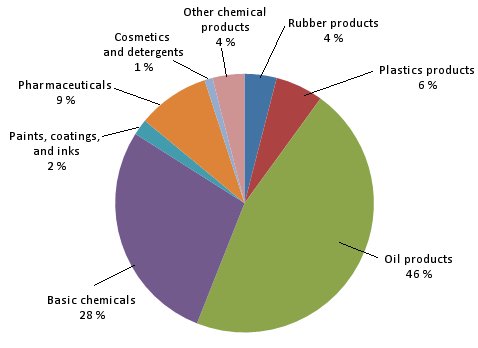 Children’s education is not always found in school books always thought in school. There are practical lessons that can be learned even from doing simple chores like cleaning a cabinet or drawers. Children learn how to organize themselves and manage their personal belongings and affairs. Children who are able to do this will grow up to be responsible individuals. Thus, parents should encourage their children to organize their clothes, toys and books. They should provide them their own cabinets where they can store and organize their personal items. Somehow this could be the beginning of their training to accept responsibility and value it dearly.
Children’s education is not always found in school books always thought in school. There are practical lessons that can be learned even from doing simple chores like cleaning a cabinet or drawers. Children learn how to organize themselves and manage their personal belongings and affairs. Children who are able to do this will grow up to be responsible individuals. Thus, parents should encourage their children to organize their clothes, toys and books. They should provide them their own cabinets where they can store and organize their personal items. Somehow this could be the beginning of their training to accept responsibility and value it dearly. Though every construction site is different in it’s nature and intention, there are basic items of safety equipment that should be present at any site. The Occupational Safety and Health Administration regulates what safety
Though every construction site is different in it’s nature and intention, there are basic items of safety equipment that should be present at any site. The Occupational Safety and Health Administration regulates what safety  According to the 2011 reports of the Centers for Disease Control and Prevention, out of 5,823 specimens examined by the National Respiratory and Enteric Virus Surveillance System and the US World Health Organization, 1,754 (30.1%) specimens were found positive for influenza. Nearly 36,000 people in the US die annually from the flu. One of the best ways to protect yourself against such infection is to get a flu vaccine.
According to the 2011 reports of the Centers for Disease Control and Prevention, out of 5,823 specimens examined by the National Respiratory and Enteric Virus Surveillance System and the US World Health Organization, 1,754 (30.1%) specimens were found positive for influenza. Nearly 36,000 people in the US die annually from the flu. One of the best ways to protect yourself against such infection is to get a flu vaccine. Most of us lead a hectic life and have a busy routine. This makes us forget about the most important thing in life which is staying safe in every environment. Safety equipment should always be used in each and every single case is needed. If you work in a hazardous environment, you should always wear the protection items that you have. Safety glasses and safety goggles provide protection from light, fire or small particles and should be worn by anyone that is close to a relevant environment. You should always keep in mind that anyone working close by can face the same danger and not only the user of the machine or the person doing the work.
Most of us lead a hectic life and have a busy routine. This makes us forget about the most important thing in life which is staying safe in every environment. Safety equipment should always be used in each and every single case is needed. If you work in a hazardous environment, you should always wear the protection items that you have. Safety glasses and safety goggles provide protection from light, fire or small particles and should be worn by anyone that is close to a relevant environment. You should always keep in mind that anyone working close by can face the same danger and not only the user of the machine or the person doing the work. Today I received a e-mail from a Real Estate Broker friend of mine. Someone forwarded a note that explained someone experienced a house fire that destroyed their home. After extensive investigation, the culprit appeared to be a Scent Provider manufactured to produce aromatic smells in the home. The Surge Protector Guy will give the homeowner 3 reasons for improved grounding in houses. These upgrades will not only provide for fire protection but implement fail-proof methods of voltage dispersion.
Today I received a e-mail from a Real Estate Broker friend of mine. Someone forwarded a note that explained someone experienced a house fire that destroyed their home. After extensive investigation, the culprit appeared to be a Scent Provider manufactured to produce aromatic smells in the home. The Surge Protector Guy will give the homeowner 3 reasons for improved grounding in houses. These upgrades will not only provide for fire protection but implement fail-proof methods of voltage dispersion. In any building it’s important to ensure there are an adequate number of safety signs. Fire safety signs in particular come in a variety of types so it’s easy to find the appropriate ones for your organisation; these could be hanging, stick-on or even luminous signs.
In any building it’s important to ensure there are an adequate number of safety signs. Fire safety signs in particular come in a variety of types so it’s easy to find the appropriate ones for your organisation; these could be hanging, stick-on or even luminous signs.  Workholding is an often overlooked part of machine work. Typically, operators and workers put materials into some type of industrial equipment for stability and hold. However, the right hold is absolutely vital for precision and safety. If materials slip during a machine process, there are more consequences than just an off specification product. Ultimately, when workholding fails, it is not uncommon for machines to become damaged and injuries to occur to operators. This is why it is vital to examine and understand the different types of workholding industrial equipment and their applications.
Workholding is an often overlooked part of machine work. Typically, operators and workers put materials into some type of industrial equipment for stability and hold. However, the right hold is absolutely vital for precision and safety. If materials slip during a machine process, there are more consequences than just an off specification product. Ultimately, when workholding fails, it is not uncommon for machines to become damaged and injuries to occur to operators. This is why it is vital to examine and understand the different types of workholding industrial equipment and their applications..JPG/220px-BYD_Qin_(Auto_Shanghai_2013).JPG) Having a baby is a wonderful gift of life but it also means that your heart is always going as you worry about your child especially if it is your first time and he or she is very little and needs maximum attention and care. On one hand it is nearly impossible to keep an eye on the baby all of the time but on the other good care involves you on a permanent watch. To gain peace of mind means that you need to feel that you know where your little one is and what he or she is doing, to help you with this there are several modern devices especially designed to assist you.
Having a baby is a wonderful gift of life but it also means that your heart is always going as you worry about your child especially if it is your first time and he or she is very little and needs maximum attention and care. On one hand it is nearly impossible to keep an eye on the baby all of the time but on the other good care involves you on a permanent watch. To gain peace of mind means that you need to feel that you know where your little one is and what he or she is doing, to help you with this there are several modern devices especially designed to assist you. Although baby safety gates do not need to be brought immediately after your baby has been born. You will need to consider purchasing them when your child is of an age where they are able to move freely around your home. So it is important to purchase such an item as soon as your baby begins to crawl.
Although baby safety gates do not need to be brought immediately after your baby has been born. You will need to consider purchasing them when your child is of an age where they are able to move freely around your home. So it is important to purchase such an item as soon as your baby begins to crawl. Every office needs a desk. It’s where you do your paperwork, conduct your business and have your computer. So office desks need to be very functional and supply enough room for all of your needs. But it doesn’t hurt if your desk is also stylish and attractive to the eye. Is it possible to have both functionality and style? With the selection of desks on the market at present, it definitely is.
Every office needs a desk. It’s where you do your paperwork, conduct your business and have your computer. So office desks need to be very functional and supply enough room for all of your needs. But it doesn’t hurt if your desk is also stylish and attractive to the eye. Is it possible to have both functionality and style? With the selection of desks on the market at present, it definitely is. An efficiency expert from England touring a bodega in Jerez was horrified at seeing so much wine being matured in old-fashioned oak butts, and required to know why it was not kept in concrete vats with some oak shavings thrown in to give the right flavor. There was at least some sense in the inquiry. Vats are invariably used for blending large quantities of sherry and also for storing the coarser wines over short periods, but they are not satisfactory for maturing high quality wines.
An efficiency expert from England touring a bodega in Jerez was horrified at seeing so much wine being matured in old-fashioned oak butts, and required to know why it was not kept in concrete vats with some oak shavings thrown in to give the right flavor. There was at least some sense in the inquiry. Vats are invariably used for blending large quantities of sherry and also for storing the coarser wines over short periods, but they are not satisfactory for maturing high quality wines.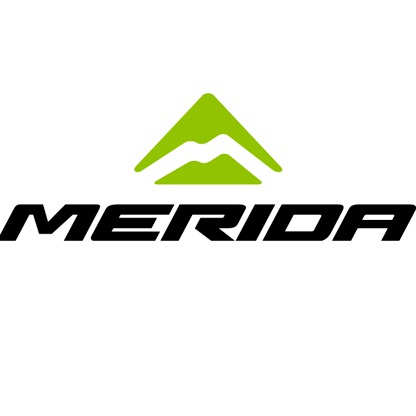 Fire alarms are so important in any home or business. They are the key ingredient in home safety, especially when everyone is sleeping. The shrieking sound of the alarms lets everyone know that there is some sort of fire or smoke in the house. These devices have saved thousands of lives, and they will continue to save lives in
Fire alarms are so important in any home or business. They are the key ingredient in home safety, especially when everyone is sleeping. The shrieking sound of the alarms lets everyone know that there is some sort of fire or smoke in the house. These devices have saved thousands of lives, and they will continue to save lives in 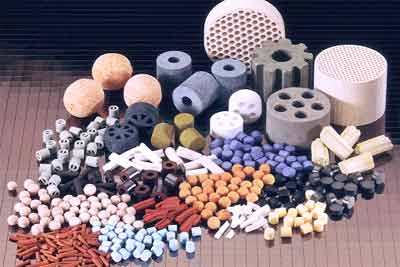 Whether you are searching for pedicure supplies or the perfect pedicure chair, you can find exactly what you need online. If your place of business offers a pedicure spa service, the right chair can make all of the difference. You can offer superior service so that you build your clientele almost effortlessly.
Whether you are searching for pedicure supplies or the perfect pedicure chair, you can find exactly what you need online. If your place of business offers a pedicure spa service, the right chair can make all of the difference. You can offer superior service so that you build your clientele almost effortlessly.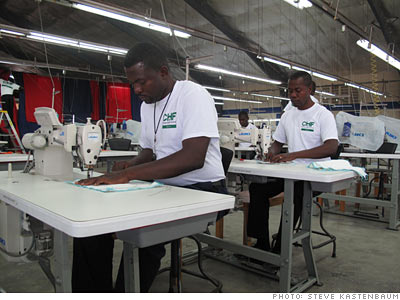 Nowadays, it is very unusual to find only one parent pursuing a career. More often than not, mother and father both have steady jobs, are both trying to climb up the corporate ladder, and both are trying to contribute to the family’s future.
Nowadays, it is very unusual to find only one parent pursuing a career. More often than not, mother and father both have steady jobs, are both trying to climb up the corporate ladder, and both are trying to contribute to the family’s future.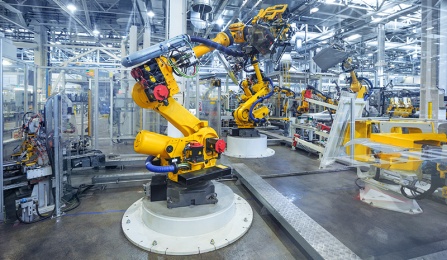 MIG welding is one of the simplest ways of welding, but it does need a good practice to perform such kind of welding. With the perfect tool and the requisite experience you could carry out the best quality welds with the help of MIG welding machines.
MIG welding is one of the simplest ways of welding, but it does need a good practice to perform such kind of welding. With the perfect tool and the requisite experience you could carry out the best quality welds with the help of MIG welding machines. When starting a new job, there are many things to consider. If it is an office job, you may need certain things such as a wardrobe that is appropriate for the company you’ll be working for. If you are starting a job that involves construction or working outdoors or any job that is in a particularly dangerous location, there are some very different things you need to consider.
When starting a new job, there are many things to consider. If it is an office job, you may need certain things such as a wardrobe that is appropriate for the company you’ll be working for. If you are starting a job that involves construction or working outdoors or any job that is in a particularly dangerous location, there are some very different things you need to consider. Industrial apparel is more than just a fashion statement; wearing the right clothing on the job site is an essential component of effective personal protective equipment, or PPE. Effective PPE is designed to mitigate workplace hazards and the clothing that workers wear contributes to their own safety on the job. The right industrial apparel and products are essential for effective PPE that meets federal safety guidelines and standards as well.
Industrial apparel is more than just a fashion statement; wearing the right clothing on the job site is an essential component of effective personal protective equipment, or PPE. Effective PPE is designed to mitigate workplace hazards and the clothing that workers wear contributes to their own safety on the job. The right industrial apparel and products are essential for effective PPE that meets federal safety guidelines and standards as well. Smart enterprises both large and small now go online to find an industrial equipment company to order everything from their packaging supplies to heavy equipment from. The internet has made it possible for even rural companies to have access to the best suppliers in the country. Because of low overheads for online “shops,” even when shipping costs are included, you can find the best prices online, as well as the widest selection of products. The only question is: how do you find the best equipment company online for your needs?
Smart enterprises both large and small now go online to find an industrial equipment company to order everything from their packaging supplies to heavy equipment from. The internet has made it possible for even rural companies to have access to the best suppliers in the country. Because of low overheads for online “shops,” even when shipping costs are included, you can find the best prices online, as well as the widest selection of products. The only question is: how do you find the best equipment company online for your needs? Above ground and inground pools usually make use of vinyl liners to hold the water in and keep the structure protected. They are preferable compared to other alternative swimming pool supplies – fiberglass, titles, pebbles, or paint – because of their affordability and low maintenance demands. It doesn’t take much to install, clean and repair a vinyl pool liner. And as an added advantage, they are also available in attractive pattern and treated to resist bacteria.
Above ground and inground pools usually make use of vinyl liners to hold the water in and keep the structure protected. They are preferable compared to other alternative swimming pool supplies – fiberglass, titles, pebbles, or paint – because of their affordability and low maintenance demands. It doesn’t take much to install, clean and repair a vinyl pool liner. And as an added advantage, they are also available in attractive pattern and treated to resist bacteria. The Big Agnes Flying Diamond tent has a floor area of 112 square feet and can sleep six people comfortably including a 35 square foot vestibule area. Although this tent is a beast it has a trail weight of only 22 pounds-trail weight includes tent body, poles and fly and a packed weight of 27 pounds -packed weight includes poles, fly, tent body, stakes, guy lines, stuff sacks and instructions. The Big Agnes is a four season tent and is perfect for Boy Scout overnights and weekend warrior trips.
The Big Agnes Flying Diamond tent has a floor area of 112 square feet and can sleep six people comfortably including a 35 square foot vestibule area. Although this tent is a beast it has a trail weight of only 22 pounds-trail weight includes tent body, poles and fly and a packed weight of 27 pounds -packed weight includes poles, fly, tent body, stakes, guy lines, stuff sacks and instructions. The Big Agnes is a four season tent and is perfect for Boy Scout overnights and weekend warrior trips. A safety policy should first adhere to safety standards set by the regulatory agency. Next, actual safety risks in the workplace should be determined and addressed in the policy. The regulations that are handed down are minimal. They address common concerns in the industry but they cannot possibly apply to every workforce because each workplace has unique risks. The safety managers should take into consideration the unique needs of their company in order to ensure a workforce free from accidents.
A safety policy should first adhere to safety standards set by the regulatory agency. Next, actual safety risks in the workplace should be determined and addressed in the policy. The regulations that are handed down are minimal. They address common concerns in the industry but they cannot possibly apply to every workforce because each workplace has unique risks. The safety managers should take into consideration the unique needs of their company in order to ensure a workforce free from accidents. A fire alarm is a fire safety device that is utilised to alert the public about a fire outbreak. Some fire alarms come with smoke detectors and sound off automatically while others require human operation. More often than not, a fire alarm is a part of a fire security system. In the UK, business owners have been required to employ extensive fire safety measures including installation of high quality fire alarms in their business premises. This is to ensure the protection not only of the property and the business but more importantly, the people inside the building including the employees and the customers.
A fire alarm is a fire safety device that is utilised to alert the public about a fire outbreak. Some fire alarms come with smoke detectors and sound off automatically while others require human operation. More often than not, a fire alarm is a part of a fire security system. In the UK, business owners have been required to employ extensive fire safety measures including installation of high quality fire alarms in their business premises. This is to ensure the protection not only of the property and the business but more importantly, the people inside the building including the employees and the customers. As a baby girl’s first birthday approaches, her parents might decide to organize for a very special party, as important to them as all the parties which she will host in the future. A girl’s first party is a very special occasion, and is often a time when family and friends gather around to admire how much she has grown since her
As a baby girl’s first birthday approaches, her parents might decide to organize for a very special party, as important to them as all the parties which she will host in the future. A girl’s first party is a very special occasion, and is often a time when family and friends gather around to admire how much she has grown since her  Auctions have been a method of trade for centuries, tracing their beginnings to ancient Greece; regardless of the item being sold, it is still an important way to conduct business today. With the advent of the internet, this type of sales venue has gained even more popularity because it allows people from all around the globe to bid on various items simply by logging onto any computer with a wifi connection. This is one of the biggest reasons they have become one of the favorite ways to buy and sell heavy-duty commercial equipment.
Auctions have been a method of trade for centuries, tracing their beginnings to ancient Greece; regardless of the item being sold, it is still an important way to conduct business today. With the advent of the internet, this type of sales venue has gained even more popularity because it allows people from all around the globe to bid on various items simply by logging onto any computer with a wifi connection. This is one of the biggest reasons they have become one of the favorite ways to buy and sell heavy-duty commercial equipment. The sun is the source of all our power. A statement not untrue, albeit a little misleading. The sun’s radiation is the origin of all the power sources we use today, affecting chemical changes to create everything from nuclear power to the much greener wind power. But how do we harness the sun’s energy, and how effective is it? A worthy question. After all, solar power is almost eternally available and, most importantly, free.
The sun is the source of all our power. A statement not untrue, albeit a little misleading. The sun’s radiation is the origin of all the power sources we use today, affecting chemical changes to create everything from nuclear power to the much greener wind power. But how do we harness the sun’s energy, and how effective is it? A worthy question. After all, solar power is almost eternally available and, most importantly, free.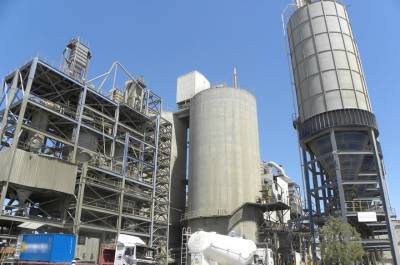 There are some simple DIY projects that can make your home value rise. While everyone wants to get their house in the best condition, some items pay back more than others in increasing home value. In today’s market, some easy DIY projects add more value than others so take a look at these when looking for a DIY project to make your home more valuable.
There are some simple DIY projects that can make your home value rise. While everyone wants to get their house in the best condition, some items pay back more than others in increasing home value. In today’s market, some easy DIY projects add more value than others so take a look at these when looking for a DIY project to make your home more valuable. They’re simply the most commonly used method to package items along with bubble padded bags in the postal
They’re simply the most commonly used method to package items along with bubble padded bags in the postal  If you have found yourself getting into horse riding recently then you’ll have no doubt found it to be a sport that is not
If you have found yourself getting into horse riding recently then you’ll have no doubt found it to be a sport that is not  After a few hours of playing billiards, the hands can get sweaty and sticky. This leads to cue sticks snagging on the skin. A common remedy is that players put talc powder on their hands to ensure a smooth glide. But doing so can leave
After a few hours of playing billiards, the hands can get sweaty and sticky. This leads to cue sticks snagging on the skin. A common remedy is that players put talc powder on their hands to ensure a smooth glide. But doing so can leave .jpg) Edible ImageA� Decorations
Edible ImageA� Decorations If you operate heavy duty vehicles then you need to ensure you are using a high performance alternator. You need to be sure you can rely on your vehicle day in and day out, in the toughest conditions which is why it is worth it to invest in a quality alternator. It really doesn’t matter the type of vehicle you are using, you need to ensure your vehicle will start when you need it, which is why a quality alternator is so critical.
If you operate heavy duty vehicles then you need to ensure you are using a high performance alternator. You need to be sure you can rely on your vehicle day in and day out, in the toughest conditions which is why it is worth it to invest in a quality alternator. It really doesn’t matter the type of vehicle you are using, you need to ensure your vehicle will start when you need it, which is why a quality alternator is so critical. Whether you allow your partner to take part in sports with your blessings or not you need to know that they are safe. Usually if the person has participated in their chosen sport for a period of time, then they are pretty well familiar with the type of safety equipment they need and have probably experienced an injury or two in the beginning of their involvement with their chosen game.
Whether you allow your partner to take part in sports with your blessings or not you need to know that they are safe. Usually if the person has participated in their chosen sport for a period of time, then they are pretty well familiar with the type of safety equipment they need and have probably experienced an injury or two in the beginning of their involvement with their chosen game. When most people think of laminating, they tend to think of applications around the office and in a classroom setting, but there are actually a number of great ways
When most people think of laminating, they tend to think of applications around the office and in a classroom setting, but there are actually a number of great ways  There are a wide variety of hazardous situations that could arise within a construction site, which is a place where a lot of heavy equipment is being operated on a regular basis. If you really want to make sure that your employees are safe from harm, it will be very important to make sure that everyone has their safety gear. Taking the time to find a store where you can buy all of these gear from can be tiresome, so sometimes the best way to find this stuff is to take your search online.
There are a wide variety of hazardous situations that could arise within a construction site, which is a place where a lot of heavy equipment is being operated on a regular basis. If you really want to make sure that your employees are safe from harm, it will be very important to make sure that everyone has their safety gear. Taking the time to find a store where you can buy all of these gear from can be tiresome, so sometimes the best way to find this stuff is to take your search online. There is great interest in the global community about the worldwide reach of an auction. Bidding facilities are a strategic avenue to auction industrial
There is great interest in the global community about the worldwide reach of an auction. Bidding facilities are a strategic avenue to auction industrial  Choosing the right industrial apparel is vital for implementing an effective personal protective equipment program that will both meet OSHA compliance standards while keeping workers safe on the job. OSHA regulates the use and selection of personal protective industrial equipment and offers a comprehensive guide for every category of hazards and numerous specific applications, with more rules being added as new hazards are identified. The government draws on numerous standards from practical experience and other safety organizations, such as the National Institute of Occupational Safety and Health (NIOSH), in order to produce working rules for employer safety.
Choosing the right industrial apparel is vital for implementing an effective personal protective equipment program that will both meet OSHA compliance standards while keeping workers safe on the job. OSHA regulates the use and selection of personal protective industrial equipment and offers a comprehensive guide for every category of hazards and numerous specific applications, with more rules being added as new hazards are identified. The government draws on numerous standards from practical experience and other safety organizations, such as the National Institute of Occupational Safety and Health (NIOSH), in order to produce working rules for employer safety. No matter how nice of a place you might have for yourself or your business, you never have any guarantee that you won’t potentially suffer from an incident such as a fire outbreak that can wreak some serious havoc on the place and potentially endanger everyone in there. There’s a lot you can do to ensure that in the event that this happens, you can react appropriately though – and all it takes is a little bit of research, some money to invest into the right products, and a good partner company that’s experienced with the market for these things.
No matter how nice of a place you might have for yourself or your business, you never have any guarantee that you won’t potentially suffer from an incident such as a fire outbreak that can wreak some serious havoc on the place and potentially endanger everyone in there. There’s a lot you can do to ensure that in the event that this happens, you can react appropriately though – and all it takes is a little bit of research, some money to invest into the right products, and a good partner company that’s experienced with the market for these things. Industrial surplus are the industrial equipments that were used by those companies that had to wrap up their organization because of insolvency or any other economical or relevant crisis. This crisis usually happens when an organization spends a particular amount of money to produce something, but later, after the production, they find that the produced goods will be unable to regain the spent amount of money. The machines that are sold by the industrial surplus shops are, in many cases, of good condition and good quality they are not usually obsolete or archaic. Rather, there is a benefit of choosing
Industrial surplus are the industrial equipments that were used by those companies that had to wrap up their organization because of insolvency or any other economical or relevant crisis. This crisis usually happens when an organization spends a particular amount of money to produce something, but later, after the production, they find that the produced goods will be unable to regain the spent amount of money. The machines that are sold by the industrial surplus shops are, in many cases, of good condition and good quality they are not usually obsolete or archaic. Rather, there is a benefit of choosing  You drink eat, you bathe in it, you clean with it. Water, the universal liquid, life giving, life sustaining, and when you really need it: life preserving. Before the technological advancements in fire fighting, the original fire fighting tool used by man is water. Despite the commercial
You drink eat, you bathe in it, you clean with it. Water, the universal liquid, life giving, life sustaining, and when you really need it: life preserving. Before the technological advancements in fire fighting, the original fire fighting tool used by man is water. Despite the commercial  Welding supplies are plentiful for all welding occupations. But here we
Welding supplies are plentiful for all welding occupations. But here we  The concept of fire and injury prevention is something that should never be taken lightly no matter what it is you do as a profession or where you reside. Everyone should take it upon himself to be educated and prepared for a variety of disastrous events ranging from something as severe as a fire, to a mild, unforeseen skinned knee. As a preventative measure to make sure you are prepared for these types of events, it is a wise idea to purchase fire safety equipment and first aid equipment for your household or workplace. As a business owner, you should make sure to have the proper equipment to ensure the safety of your employees and customers, and as a family man, you need to make sure your family is safe and protected from hazardous events and circumstances at all times.
The concept of fire and injury prevention is something that should never be taken lightly no matter what it is you do as a profession or where you reside. Everyone should take it upon himself to be educated and prepared for a variety of disastrous events ranging from something as severe as a fire, to a mild, unforeseen skinned knee. As a preventative measure to make sure you are prepared for these types of events, it is a wise idea to purchase fire safety equipment and first aid equipment for your household or workplace. As a business owner, you should make sure to have the proper equipment to ensure the safety of your employees and customers, and as a family man, you need to make sure your family is safe and protected from hazardous events and circumstances at all times. It is very important to have careful planning before installing any electrical component. It depends on the installation area and usage of the equipment. These energy efficient products help to save your monthly electricity bills. These products can be used for both residential and commercial purposes. The electrical components make your life comfortable and hassle-free.
It is very important to have careful planning before installing any electrical component. It depends on the installation area and usage of the equipment. These energy efficient products help to save your monthly electricity bills. These products can be used for both residential and commercial purposes. The electrical components make your life comfortable and hassle-free. There are many cases in which an infant or a toddler experiences freaky mishaps due to accidents that occur in the bathroom. It is unfortunate to know that some children and toddlers have lost their life due to accidents that have taken place in this manner. Thus, it is important to make use of products that will be providing a good level of safety for children and toddlers.
There are many cases in which an infant or a toddler experiences freaky mishaps due to accidents that occur in the bathroom. It is unfortunate to know that some children and toddlers have lost their life due to accidents that have taken place in this manner. Thus, it is important to make use of products that will be providing a good level of safety for children and toddlers.